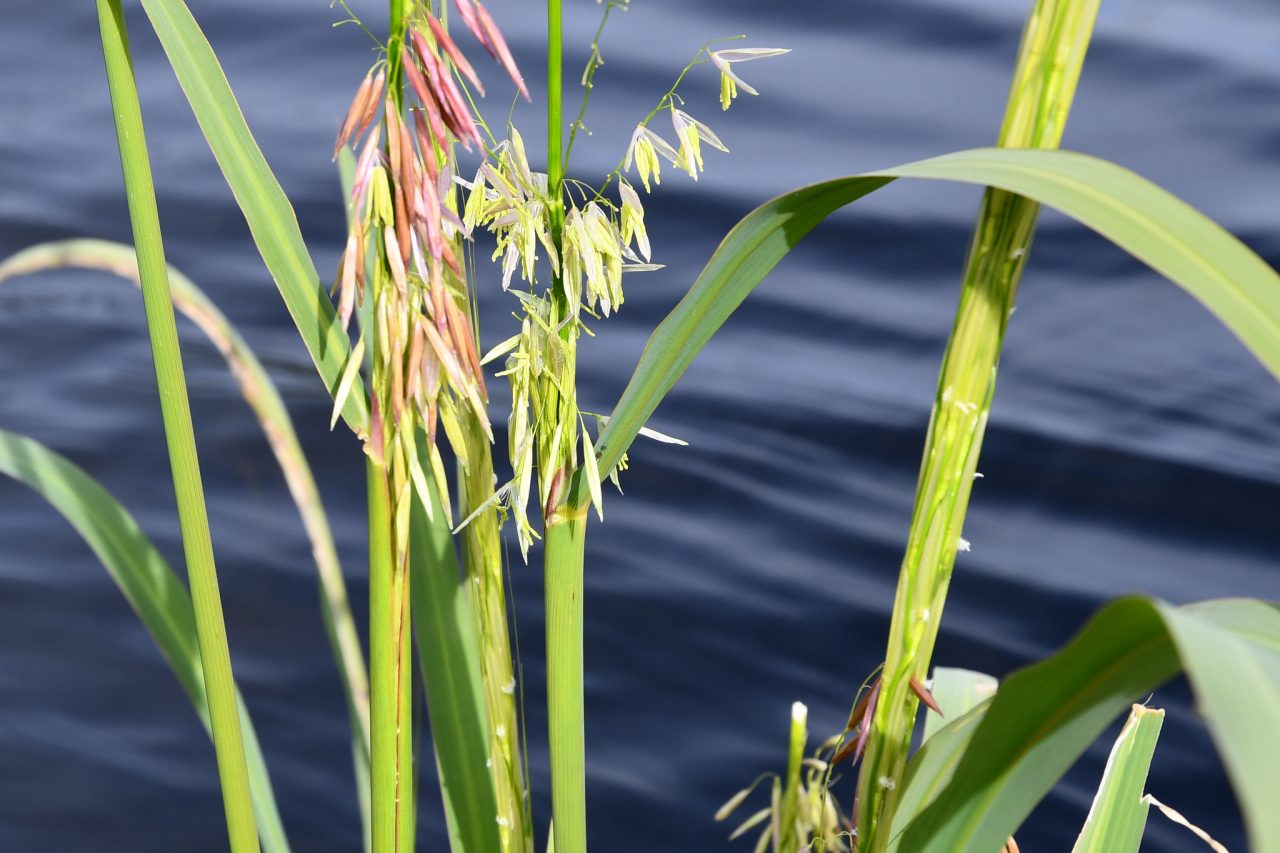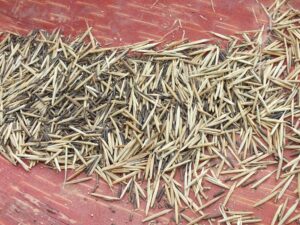
by M. Lucille Janowiak OP
If you are like me, you might not know much about the history of wild rice in Michigan. In fact, the more I learned, the more I became intrigued by this history of the Great Lakes region of the United States.
I was also moved to consider the ways human influences dramatically affect natural resources not only in other regions of the world, but right here in Michigan, too.
In February, I had an opportunity to hear from researcher and author, Barbara J. Barton, as she shared her findings and stories about wild rice with the Wild Ones of River City.*
Below are some highlights from notes I took during her recent presentation in Grand Rapids.
The migration story of the Anishinabe people is profoundly connected, culturally and spiritually, to Michigan’s Wild Rice. Living in New Brunswick, Maine, the Anishinabe were visited by eight prophets and among their prophecies were these two:
When people with white faces arrive, coming across the ocean riding on logs and blown by the wind, they will destroy you.
To save your people, you are to travel westward until you find food growing on water.
The Anishinabe heeded the warning and pursued the long westward journey following the St. Lawrence River. When they arrived in the Great Lakes region, they discovered an abundance of wild rice plants growing in the water and thus settled in the region.
Early European writings indicated that wild rice was found in every river and stream in Michigan! [The plants begin with seeds in waterbeds where water is 3’ deep or less. Seeds, warmed by the sun, germinate sending out fine hair-like filaments to the surface where they grow long grassy leaves that lie horizontally on the surface water. As the grasses mature, they become erect, subsequently producing seed heads which ripen for harvesting. Plenty of seeds remain to fall back into waterbed ready for next year’s growth.]

Wealthy duck hunters in the late 1800s purchased large acreage of the Monroe Marsh at the mouth of the Raisin River. These 5000 acres of wild rice became a world renown destination for duck hunters. The Saginaw Bay historically held 10,000 acres of wild rice, St. Clair Flats, 2000 acres and the mile-long Houghton Lake was filled with wild rice. Of the 198 historic sites of wild rice in our state, 6 remain although other plantings are now extant.
So why have these historic sites disappeared?
When the logging industry thrived in Michigan, rivers and lakes were jammed with logs destroying water vegetation; the damming of rivers to benefit logging obliterated the rice when the dams were opened. Paper and other industries, with their subsequent polluting discharges, decimated rice beds including the pristine rice paddies of the Monroe Marsh which had also been reduced by the dredging and channeling of the Raisin River.
The outbreak of malaria in 1859-60 negatively impacted the rice beds as well. Authorities, not knowing the cause of malaria, yet sensing it had something to do with wet places, drained the wetlands by cutting ditches, still visible today, all over the landscape. Not until 1906 were mosquitoes identified as its vector. Nor did farmers want to have wild rice growing nearby since it attracted multiple species of wildlife and birds who feasted on their farm produce as well.
In 2016, Elder Frank Ettawageshik, from the Little Traverse Bay Bands of Odawa Indians, related memories of his people harvesting Manoomin from Rice Lake, their main source of food. Barton noted that in 1909, the five-mile-long Rice Lake, located in Grant, was the largest wild rice bed in Michigan but now no longer existed. It had been drained and sprayed with kerosene and oil to kill the rice so that farmers could do muck farming. Now, onions, celery, carrots and beets grow in the rich muck. Thousands of acres of rice-producing wetlands have been turned into muck farms.
Indigenous people today are restoring rice beds and conducting rice camps where they harvest and process wild rice. This communal endeavor is a way for them to reclaim their ancestral identities/traditions. Many more historical and fascinating stories related to wild rice can be found in Barbara J. Barton’s book, “MANOOMIN: The Story of Wild Rice in Michigan.”
* Find Barbara Barton’s fascinating Wild Rice presentation to the Wild Ones of River City at: https://www.youtube.com/watch?v=NOwOhO0UWWY

